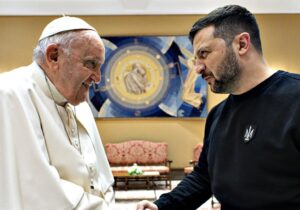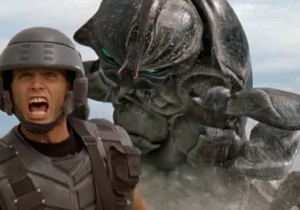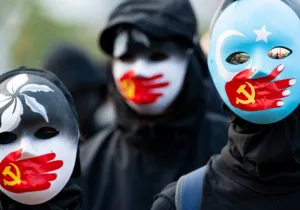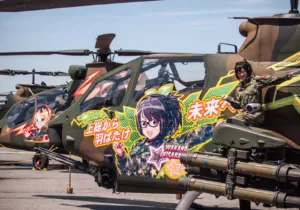Perhaps the most intriguing—and certainly the most disquieting—section of President Donald Trump’s State of the Union address was his 475-word overview of the monstrous North Korean regime.
It was intriguing because Trump chose to use the biggest megaphone an American president has—at 48 million viewers, a State of the Union address has more reach and punch even than Trump’s Twitter account—to remind the American people of what the North Korean regime is.
As Trump explained, Kim Jong Un’s regime is “cruel” and “depraved.” It “has oppressed its own citizens” “brutally.”
The president then used two real-life stories to make his case against the Kim Dynasty.
“Otto Warmbier was a hardworking student at the University of Virginia,” Trump began. In 2016, during a study-abroad tour of North Korean, Warmbier allegedly tried to take down a propaganda poster in his hotel. After a one-hour trial, he was sentenced to 15 years of hard labor. He was returned to the United States in mid-2017 in what doctors called “a state of unresponsive wakefulness.” They surmised that Warmbier had suffered a “cardiopulmonary arrest” or a brain trauma that was left untreated. He died days after North Korea shipped his lifeless body back to America. “We pledge to honor Otto’s memory with American resolve,” Trump said, as the young man’s parents wept.
Next, Trump shared the story of Ji Seong-ho. “In 1996, Seong-ho was a starving boy in North Korea,” Trump began. “One day, he tried to steal coal from a railroad car to barter for a few scraps of food. In the process, he passed out on the train tracks, exhausted from hunger. He woke up as a train ran over his limbs.” His legs were amputated. Years later, after returning from a visit to China, he was “tortured by North Korean authorities… His tormentors wanted to know if he had met any Christians,” Trump explained. “He had—and he resolved to be free.”
So, he fled North Korea and “traveled thousands of miles on crutches across China and Southeast Asia to freedom.” His father wasn’t so fortunate; he was caught and “tortured to death.”
Today, Ji Seong-ho lives in Seoul and helps his former countrymen escape the vast torture chamber that is North Korea.
There are echoes here of President Ronald Reagan’s rhetorical salvos against what he called “an evil empire.” In so many words, Trump is challenging the American people today, as Reagan did in 1983, “to beware the temptation of pride—the temptation of blithely declaring yourselves above it all and label both sides equally at fault, to ignore the facts of history…and thereby remove yourself from the struggle between right and wrong and good and evil.”
Make no mistake: the North Korean regime is evil to its core. Its crimes against Otto Warmbier and Ji Seong-ho actually pale in comparison to what a special United Nations panel calls “a wide array of crimes against humanity” and “unspeakable atrocities.”
The Kim regime’s crimes include “persecution on political, religious, racial and gender grounds, the forcible transfer of populations, the enforced disappearance of persons…extermination, murder, enslavement, torture, imprisonment.” Kim’s beastly regime engages in systematic sexual violence, including rape, forced abortions, and infanticide. Newborns are regularly killed by drowning and suffocation, the UN reports. Many forced abortions are a function of Pyongyang’s retrograde desire to preserve a “pure Korean race,” according to the UN. “The concept of ‘pure Korean blood’ remains in the DPRK psyche,” the UN report explains, quoting a former North Korean official. “Having a child who is not ‘100 percent’ Korean makes a woman ‘less than human.’” In short, if there ever was a candidate for military intervention on humanitarian grounds, it’s North Korea.
Of course, any sort of military intervention—whether on humanitarian grounds or on national-security grounds—would trigger Korean War II. That brings us to the disquieting aspect of Trump’s State of the Union address.
Trump talked about North Korea’s brutality and “the depraved character of the North Korean regime” in the context of “North Korea’s reckless pursuit of nuclear missiles,” which “could very soon threaten our homeland.” He left an implicit question unasked: Can such a regime be trusted with nuclear weapons?
Noting that “complacency and concessions only invite aggression and provocation,” he vowed, “I will not repeat the mistakes of past administrations that got us into this dangerous position.”
Put it all together, and Trump’s comments on North Korea sound like a bill of indictment against Pyongyang. Indeed, one is left with the sense that if there is a Korean War II, Otto Warmbier may be remembered as the war’s first casualty.
However, it’s not Trump’s words alone that are disquieting, but rather that they are part of a larger train of events that seems to be moving us toward war.
- In December, Defense Secretary James Mattis declared that “storm clouds are gathering” over the Korean Peninsula.
- On the very same week, Marine Corps Commandant Gen. Robert Neller warned his men, “I hope I’m wrong, but there’s a war coming.”
- Upon returning from Iraq last month, Sen. Tammy Duckworth—a disabled combat veteran of the Iraq War—reported, “Americans simply are not in touch with just how close we are to war on the Korean peninsula.”
- In September, Mattis warned Pyongyang that “any threat to the United States or its territories, including Guam, or our allies will be met with a massive military response, a response both effective and overwhelming.”
- In August, Trump declared that North Korea’s threats “will be met with fire and fury.”
Equally worrisome, these words are just background noise to the military moves and countermoves on and around the Korean peninsula: spasms of North Korean missile tests and nuclear tests; the deployment of three U.S. aircraft carriers to the region; high-profile flights of U.S. bombers over the peninsula; U.S., South Korean (ROK), and Japanese warplanes conducting joint maneuvers; U.S. ground units training in tunnel warfare; Washington agreeing to Seoul’s request to station “strategic assets” (heavy bombers, stealth aircraft, submarines and/or aircraft carriers) on ROK territory.
The toll from Korean War I should give us pause: 38,000 Americans, 103,000 South Koreans, 316,000 North Koreans, 422,000 Chinese, some 2 million civilians killed during three years of conventional warfare. Today, we have the specter of a mushroom cloud hanging over the sequel.
North Korea deploys 13,600 artillery pieces/rocket-launch systems and hundreds of missiles. It’s expected that every third round fired by North Korea would be a chemical weapon. Just 35 miles from the demilitarized zone (DMZ) along the border, Seoul would bear the brunt of the blow. Even a short war, even a conflict contained to the peninsula, even a preemptive strike that gets “most” of Kim’s nuclear, rocket, and artillery capabilities would trigger, in Joint Chiefs Chairman Gen. James Dunford’s estimation, “a loss of life unlike any we have experienced in our lifetimes.” The Pentagon has projected more than 200,000 U.S.-ROK military casualties in the first 90 days, plus hundreds of thousands of civilian casualties. Such a war would give new meaning to the term “Pyrrhic victory”—and would crash up against the Just War precept that “the morally weighted goods achieved by the war outweigh the morally weighted bads that it will cause.”
All of this explains why the measure of success in Korea for U.S. presidents is simply getting through another day, another year, another term without another war—and why we must prepare for the worst, protect our allies, and pray for our leaders.
—
Alan Dowd is a contributing editor to Providence and a senior fellow with the Sagamore Institute Center for America’s Purpose.
Photo Credit: U.S. Marine Corps 1st Lt. Harry J. D. Walker (left) communicates with his platoon while taking simulated fire during Korean Marine Exchange Program (KMEP) 17-14 in the Republic of Korea on August 11, 2017. KMEP 17-14 enables the Republic of Korea and U.S. Marines to focus on exchanging tactics, procedures, and increasing interoperability. The Hawaii-based battalion was forward deployed to Japan as part of the Unit Deployment Program. U.S. Marine Corps Photo by Cpl. Aaron S. Patterson.







 Sponsor a student for Christianity & National Security 2024
Sponsor a student for Christianity & National Security 2024